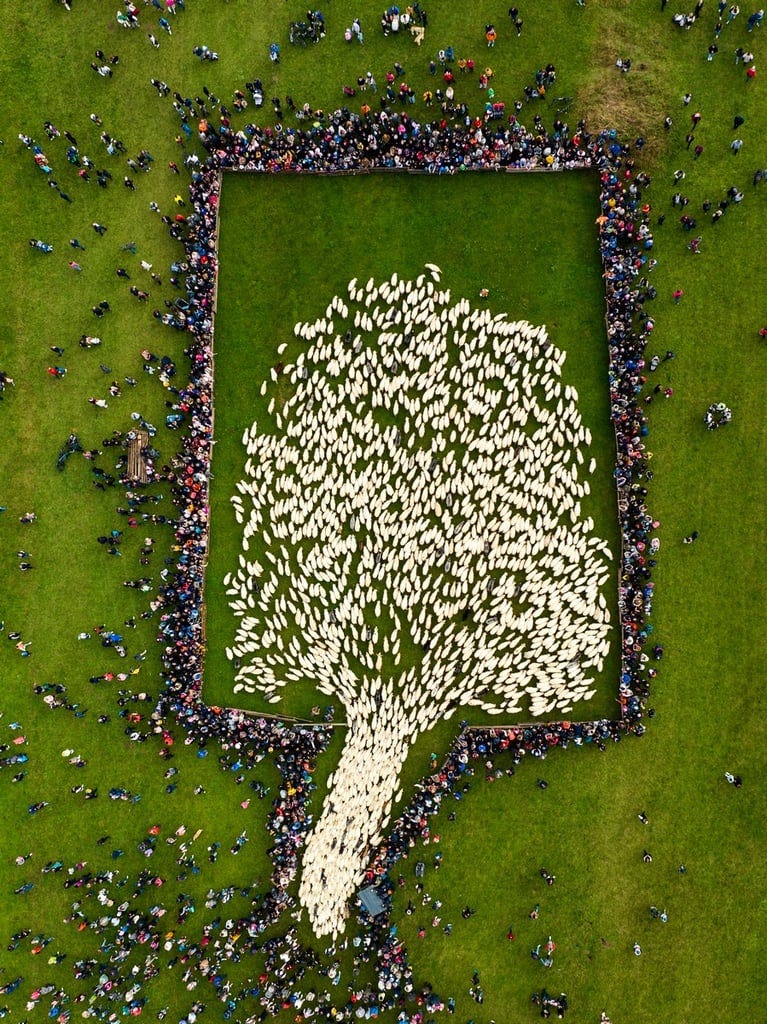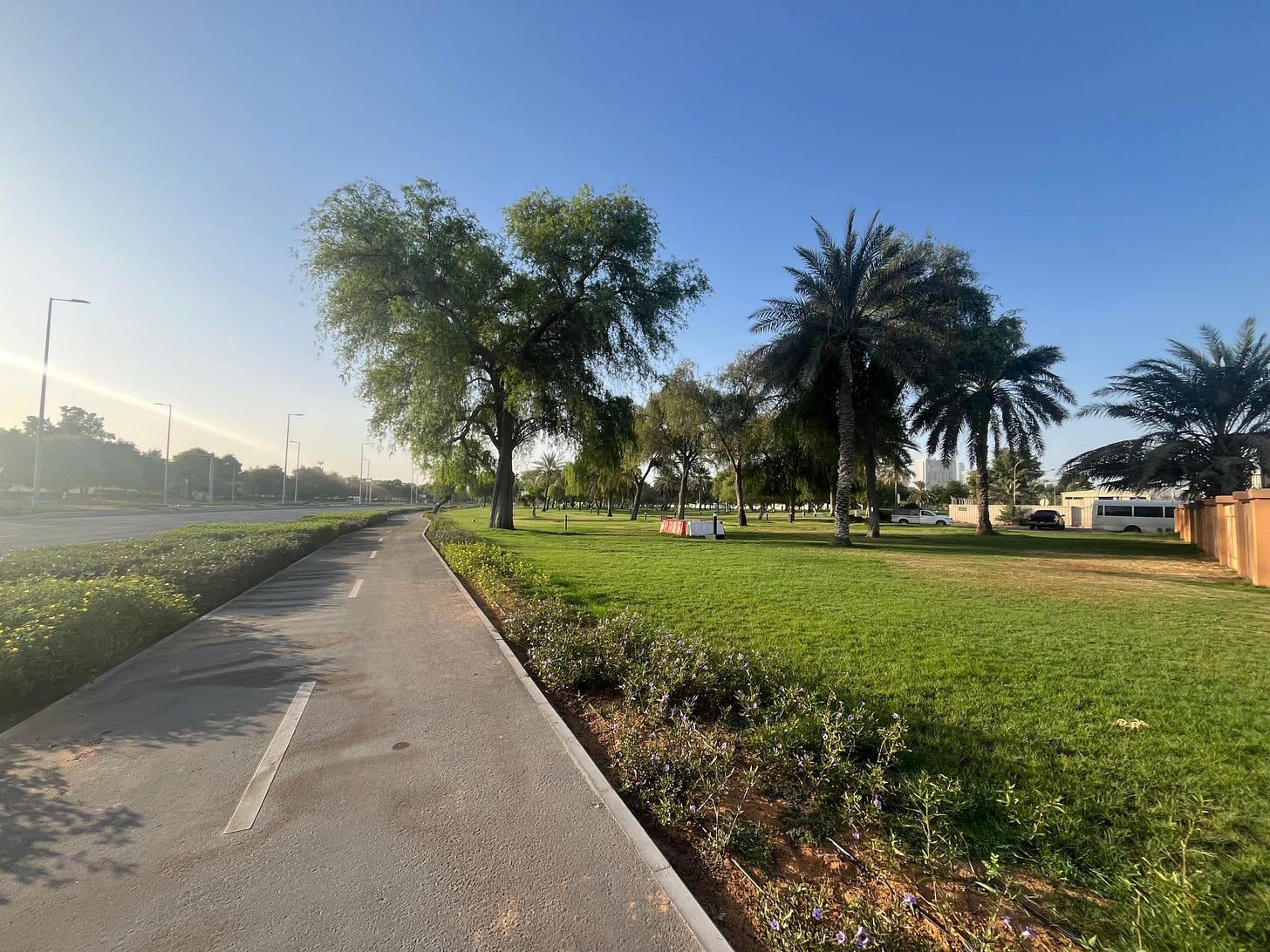50 Things, How to Win Nobel, Plastic List & Sheep Tree
#66 of 10+1 Things | Abu Dhabi
⚡ Welcome to #66 of 10+1 Things!
To everyone who bought me a coffee last week ($1 or ₹85) - thank you!
10+1 Things is a reader-supported publication, and your support directly enables me to keep this newsletter going and growing.
So I've been hitting the gym consistently for a few months now, trying to lose fat and build some muscle. But honestly, the results have been pretty underwhelming. I know progress isn't always linear and maybe I'll see changes down the road, but I wanted to make sure I'm actually doing this right.
Like most people on a transformation journey, I've been trying to track my calories and stay in a deficit. But here's the thing that's driving me crazy: calorie tracking apps are incredibly frustrating to use. The friction is just too high. Think about it - you finish eating, then you have to remember to open the app, search for your food, pick the right serving size, log everything. It's mentally exhausting and honestly makes eating feel like a chore.
I'm convinced this is a real problem that affects way more people than just me. So I've been working on a personal solution that removes most of this friction (and no, it's not about snapping photos of your food or wearing some weird pendant).
I'm almost done with the MVP and I'll be sharing it with you soon. If you've ever struggled with calorie tracking or given up on those apps because they're too annoying, I'd love to chat with you. Just reply to this email and let's connect.
More updates and hopefully a demo coming next week. As always, I'm excited to share what I've been building!
Without further ado, here are 10+1 things I thought were worth sharing this week:
👬 Making Close Friends
This interesting read by Neel Nanda talks about how he cracked the code of making close friends through an unconventional experiment. Despite having plenty of casual friendships, he realized at 19 that he'd never formed a real emotional connection with anyone. So he did something most people would find terrifying - he created a list of deeply personal questions and approached 20 acquaintances asking if they'd spend a few hours getting vulnerable together. What happened next surprised him: 80% said yes, and he formed genuine close friendships with half of them, including what became his closest friendship. His approach flips the script on how we think about friendship - instead of waiting for connections to "happen naturally," he treats it as a skill you can deliberately practice and optimize for finding the right people who crave authentic connection just as much as you do.
📊 How is Felix Today?
HowisFelix.today was a fascinating visualization project done by Felix Krause since 2019 where he tracked over 100 different data types about his daily life, collecting ~380,000 data points over 3 years. The project aimed to answer questions like how different cities affect his fitness and happiness, how sleep impacts his day, and weather's effect on his life. Some interesting insights include that he walked twice as much in NYC compared to other cities, his resting heart rate was lower when sleeping at his parents' countryside home, and days with more than 4 alcoholic drinks made him 21x more likely to dance. He tracked everything from computer usage and location data to mood, fitness, and even Instagram stories using a custom database and Telegram bot. While the project provided valuable self-awareness, he concluded that building his own solution wasn't worth the hundreds of hours invested, as the surprising insights were fewer than expected.
🔪 Cheefarcuut
Irrespective of whether you have an expensive knife or not, all knives require sharpening and without that they're of no use. I've tried a cheap Amazon sharpener and also a stone but nothing has clicked for me so far. But this interesting product that's been crowdfunding called Cheefarcuut looks promising - it claims to turn anyone into a "sharpening master in minutes" with zero skills required. What's interesting is their engineered approach that can supposedly take a completely dull or even chipped knife and restore it to razor-sharp condition in under 3 minutes. They've tested it on over 10,000 knives and promise consistent results whether you're sharpening a tiny paring knife or a massive chef's knife. From what I read on Kitchen Knife Forums, the feedback is positive so far!
🔨 50 Things
This interesting piece by Product for Engineers shares 50 lessons learned while building successful products. Some interesting lessons include that your website is your product's first impression so boring templates signal weak teams, doing customer support as an engineer shortens the feedback loop dramatically, and "fake door tests" (buttons with nothing behind them) can validate features before building them. They emphasize that at Google, 80-90% of product experiments fail but the 10% that succeed more than pay for all failures. The piece advocates for keeping teams small (6 people or fewer) with full autonomy and shipping fast since waiting "one more week" is almost always a mistake. A great read if you’re into building products!
💬 Why are Humans Advanced?
I found this interesting discussion on Reddit where someone asked what made humans evolve to become so advanced compared to other species. The responses highlighted a range of fascinating reasons: our ability to pass knowledge across generations unlike other species, opposable thumbs for precise tool manipulation, excellent endurance and sweating for persistence hunting, complex language for coordination, cooking food which freed up energy for bigger brains, and even our unique throwing ability that made us deadly hunters. One comment perfectly captured this with a story of a guitar teacher whose student became better than him - when asked if that made him a bad teacher, he replied "No, it means I'm doing something right - every teacher should want their student to surpass them as quickly as possible," illustrating our unique ability to transmit knowledge across generations.
🍕 Eat for the Planet
Scientists came up with a climate-friendly food plan in 2019 and climate journalist Dharna Noor wanted to test if it could actually work for everyday Americans by shopping exclusively at dollar stores for a week. The Lancet planetary health diet calls for mostly vegetables, legumes, and whole grains with minimal meat and dairy to reduce food emissions that contribute up to a third of global greenhouse gases. Her experiment was eye-opening but challenging - dollar stores had extremely limited fresh produce, most packaged foods contained added sugars that violate the diet, and she had to drive 15 minutes just to find any vegetables. By day three she was so desperate for fresh food that she caved and ate cherry tomatoes at a work event, and her final meal included contraband radicchio from her health food store stash!
🏅 How to Win a Nobel
This interesting piece by Nature crunches the data on all 646 Nobel science prize winners to reveal the winning patterns. Your best shot comes at age 54, though you'll wait about 20 years between doing the work and getting recognized. Location matters enormously - 54% of prizes go to North America, and moving there helps if you're born elsewhere. Most importantly, working in a previous Nobel winner's lab dramatically improves your odds, with 702 out of 736 laureates connected through academic lineages. Women have much better chances in physiology or medicine, and just five research areas account for over half of recent prizes. Interestingly, you're likely to share your prize with others, and having a name starting with J or A seems oddly common among winners.
🧬 Plastic List
I came across this interesting project called PlasticList that tested 300 everyday foods for plastic chemicals and found them in 86% of products. What started as a simple two-week project turned into a six-month, $500,000 investigation that revealed these chemicals in everything from baby food to organic produce, and even raw milk straight from farms and high-end items from Whole Foods. They found plastic chemicals in every single baby food, prenatal supplement, and ice cream they tested, with some products exceeding European safety limits by thousands of percent. Most of the plastic contamination was due to packaging, but it's an interesting project to see where we encounter plastics everywhere. If you want a better UI, there's plastic.food that lets you search the same data with a better search
📚 Becoming Bangalore
This week I picked up a book titled Becoming Bangalore: Stories That Shaped a Hometown by Roopa Pai after seeing it suggested by Pritesh on his Stay Curious newsletter. I've never lived in Bangalore but it's an overnight bus journey from home, so many of my friends live there. Except for the traffic I've heard only good things about this garden city and this felt like an interesting read. It's a collection of short essays on quirky slices of city life by a third-generation Bangalorean who leads heritage walks around the city. For instance, one chapter tells how chow chow came to Bangalore, tracing how the Jamaican chayote traveled all the way to India and became the beloved Bangalore vegetable we know today.
Some excerpts from the book are quite interesting:
“In 1910, there were close to 1,000 acres of and under apple cultivation in Bangalore alone! By 1920, however, the dream had died - air pollution from the rising number of motor vehicles on the city’s streets had put paid to the apple crop. Yup, even a century ago, Bangalore traffic had a bad rap.”
~ As always, resurfaced by Readwise (FREE!).
If you’re interested, read my review of Readwise.
📸 Sheep Tree

Photographer Jan Ulicki captured this beautiful image during 'Redyk', a traditional Polish highland event where thousands of sheep descend from the mountains accompanied by highlanders and music. He took this striking "Sheep Tree" photograph in Szczawnica when the sheep were being driven into a pen, with tourists naturally forming a frame while the sheep created an amazing tree-like formation. It's a captivating shot that perfectly captures both the cultural significance and visual beauty of this centuries-old pastoral tradition.
🎬 Video
This video on Gyotaku is truly fascinating. It explores the Japanese art of fish printing, where fishermen would ink freshly caught fish and press them against paper to create detailed imprints. What started as a practical way to settle 19th century fishing competitions and prevent exaggerated catch claims has evolved into a worldwide art form. The process involves cleaning and inking the fish, pressing dampened washi paper against it, then painting in the eyes afterwards before washing and releasing or eating the fish.
🛒 Classifieds, Slots Available!
Got something remarkable to share with the world? 10+1 Things newsletter is read by a highly engaged audience across 94 countries and 48 US states. Reach out today to tap into a diverse, curious, and invested global community eager to discover the next big thing!
📩 Get in touch to book your spot for next week!
That’s 10+1 Things for the week!
Which one was your favourite this week?
Leave a comment or reply to this email.
This newsletter is FREE, but not CHEAP. It takes a lot of effort and time from my end (7~8 hours) to deliver this newsletter every week. You can help me in keeping it going by forwarding it to someone you like, buying me a coffee ($1 or ₹75), sending me some crypto, visiting my blog, signing my guestbook or following me on X.
I also have an AMA section on my blog where you can ask me any questions. Plus, I'm available for a chat during my Unoffice Hours.
See you next week!
With Love,
Rishi
“A house that does not have one warm, comfy chair in it is soulless.”
~ May Sarton.






Oh wow! So good to know that you loved "Becoming Bangalore" :)